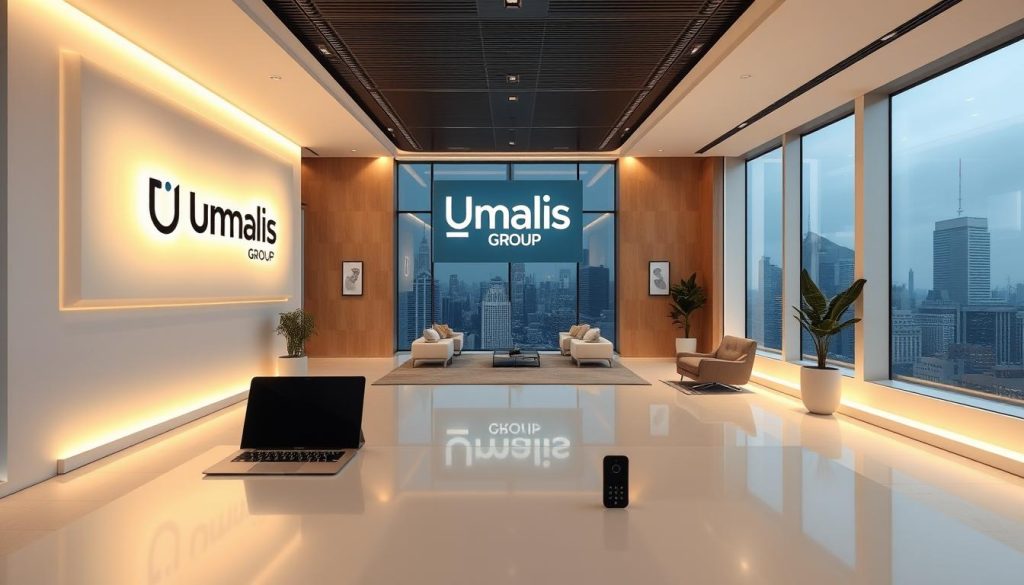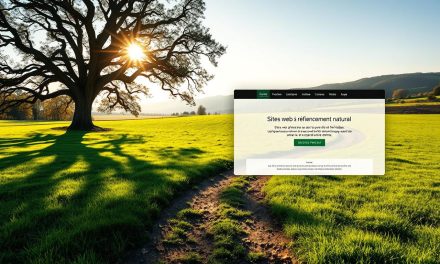Did you know 84% of companies find new business partners through trusted recommendations? This statistic reveals why independent professionals who master relationship-building often outpace competitors in today’s evolving economy.
The landscape for self-employed experts has shifted dramatically. Businesses now prioritize specialized skills over traditional agency contracts, creating unprecedented opportunities for those ready to adapt. With over 70% of organizations hiring external consultants last year, the demand for tailored solutions keeps rising.
Transitioning to independent work requires more than technical expertise. Success hinges on strategic planning—from selecting services that align with market needs to cultivating lasting client relationships. Specializations like social media management or SEO optimization allow professionals to differentiate themselves while addressing specific business challenges.
Building a sustainable practice involves overcoming common hurdles. Time management, consistent self-promotion, and balancing multiple projects become critical skills. Yet those who navigate these challenges effectively often discover greater flexibility and control over their career trajectory than traditional roles provide.
Table of Contents
Key Takeaways
- Referrals drive 84% of B2B partnerships, making networking essential
- Specialized services like SEO create competitive advantages
- Strategic planning transforms short-term projects into lasting careers
- Client acquisition requires continuous self-promotion
- Versatility across industries increases earning potential
Understanding the Freelance Digital Marketing Landscape
The shift toward specialized expertise has reshaped how companies approach their strategies. Organizations now seek agile partners who deliver tailored solutions rather than generic approaches. This evolution creates fertile ground for skilled professionals ready to meet specific needs.
The Rise of Independent Expertise
Specialists now operate in a marketplace where 63% of companies prefer short-term collaborations over permanent hires. Advanced tools once reserved for large agencies—like analytics platforms and automation software—are now accessible to solo professionals. This levels the playing field, allowing individuals to deliver enterprise-grade results without corporate overhead.
Project-based engagements let you collaborate with diverse clients, from tech startups to retail chains. This variety builds adaptable experience while reducing reliance on single income sources. One month might involve crafting email campaigns for a local bakery, the next could focus on optimizing search visibility for a SaaS provider.
Navigating Modern Realities
Global connectivity offers access to international clients but intensifies competition. Platforms like LinkedIn and Upwork showcase millions of profiles, making differentiation critical. Successful practitioners combine technical mastery with soft skills—active listening, clear communication, and deadline management often determine repeat engagements.
While 72% of specialists report higher satisfaction than traditional roles, challenges persist. Income variability requires disciplined budgeting, and self-promotion consumes 30% of working hours on average. Yet those who systematize client acquisition and delivery often build sustainable practices outperforming agency salaries.
Defining Your Brand Identity as a Freelancer

A strong brand identity separates industry leaders from interchangeable vendors. Your visual language and communication style form clients’ lasting impression before they read your first proposal. 87% of decision-makers say consistent branding increases perceived expertise, according to recent industry surveys.
Creating a Consistent and Compelling Brand
Start by mapping your core values to visual elements. Choose colors that reflect your professional ethos—deep blues for trust, vibrant oranges for creativity. Typography should balance readability with personality, using no more than two complementary fonts.
Your logo acts as a silent ambassador. While complex designs fade, simple marks with clear symbolism endure. Consider how Apple’s bitten apple or Nike’s swoosh convey meaning without words.
Leveraging Visuals and Tone to Stand Out
Voice consistency matters as much as visual identity. A financial consultant might use authoritative language with data-driven examples, while a lifestyle coach could adopt conversational phrasing. Authenticity remains crucial—clients spot mismatches between promised values and actual communication styles.
| Element | Primary Purpose | Implementation Tip |
|---|---|---|
| Color Palette | Emotional Connection | Use color psychology principles |
| Typography | Readability & Personality | Limit to 2 complementary fonts |
| Visual Style | Instant Recognition | Maintain across all platforms |
| Brand Voice | Audience Resonance | Create style guide for teams |
Regularly audit your brand assets across platforms. Inconsistent logos or outdated taglines confuse potential partners. Update materials quarterly while maintaining core identity elements to show evolution without losing recognition.
Building an Effective Digital Marketing Strategy

Successful independent professionals know that a well-crafted plan separates temporary gigs from lasting partnerships. This begins with understanding client objectives through systematic discovery processes. 79% of decision-makers prioritize collaborators who demonstrate structured thinking, according to recent B2B surveys.
Identifying Your Niche and Target Audience
Specialization amplifies impact. Focus on industries where your expertise solves specific problems—like helping eco-conscious brands improve their online visibility. Conduct psychographic analysis to uncover what motivates your ideal clients beyond basic demographics.
« The most effective strategies emerge from aligning skills with underserved market needs, » notes Léa Martin, founder of a Paris-based consultancy. Use competitive analysis tools to identify gaps competitors overlook, positioning yourself as the solution.
Setting Clear, Achievable Goals
Transform vague aspirations into actionable targets. A local bakery might need 30% more website conversions, while a tech startup could prioritize lead quality over quantity. Establish SMART objectives that serve both client ambitions and your growth metrics.
Regular progress reviews maintain momentum. Schedule monthly check-ins to assess what’s working, using data-driven insights to refine tactics. This approach builds trust while ensuring strategies evolve with market shifts.
Digital Marketing Campaigns for Freelancers
While 68% of businesses abandon strategies after six months, top-performing campaigns share three traits: precision targeting, measurable outcomes, and adaptive execution. These elements transform temporary projects into long-term client relationships.
Key Components of a Successful Campaign
Start by defining specific objectives tied to client needs. A local retailer might need foot traffic boosts, while a SaaS company prioritizes demo requests. Align every element—from content themes to platform choices—with these goals.
Effective campaigns balance creativity with data. Use audience insights to craft messages that resonate emotionally while addressing practical needs. For example, eco-friendly brands often respond to sustainability-focused storytelling paired with carbon footprint calculators.
| Metric | Purpose | Tool Example |
|---|---|---|
| Engagement Rate | Content Relevance | Google Analytics |
| Conversion Rate | Goal Achievement | Eclincher |
| ROI | Profitability | Custom Dashboards |
| Bounce Rate | Audience Targeting | Heatmap Software |
Measuring Success and Adjusting Strategies
Track progress weekly using predefined KPIs. Compare results against initial benchmarks to identify trends. If email open rates drop below 18%, test new subject lines or send times.
Present findings through visual reports that highlight business impacts. Show how a 15% Instagram engagement increase translates to 23 more store visits monthly. This approach builds trust and justifies strategy shifts.
Build flexibility into every plan. When a client’s webinar sign-ups stagnate, quickly pivot to LinkedIn polls or QR code flyers. Regular adjustments keep campaigns effective despite market changes.
Leveraging Social Media Marketing
Social platforms now drive 73% of B2B lead generation, making strategic use essential for professional growth. While many focus on quantity over quality, successful practitioners prioritize alignment between platform strengths and client needs.
Choosing the Right Platforms
Not all channels deliver equal value. Start by analyzing where your ideal clients spend time. A graphic designer might prioritize Instagram’s visual ecosystem, while a business consultant gains traction through LinkedIn’s professional network.
| Platform | Strengths | Ideal Audience |
|---|---|---|
| B2B Networking | Executives, Consultants | |
| Visual Storytelling | Designers, Creatives | |
| Twitter/X | Real-Time Updates | Tech Professionals |
| Inspiration Sharing | Lifestyle Brands |
Creating Engaging Content and Posts
Authenticity outperforms perfection. Share actionable insights through carousel posts or short tutorials that solve specific problems. A tax advisor could post bite-sized compliance tips, while a photographer might showcase before/after editing techniques.
Consistency matters more than frequency. Use scheduling tools to maintain visibility without daily effort. Track engagement patterns—posts published Tuesdays at 10 AM often see 28% higher interaction rates in European markets.
| Content Type | Purpose | Engagement Boost |
|---|---|---|
| How-To Guides | Demonstrate Expertise | +34% |
| Client Stories | Build Trust | +41% |
| Industry Trends | Show Awareness | +27% |
| Polls/Questions | Encourage Interaction | +53% |
Measure success through meaningful metrics like message responses rather than vanity likes. Adjust strategies quarterly based on what drives actual consultations or project inquiries.
Harnessing the Power of SEO and Content Marketing
Effective web presence begins with understanding how audiences search for solutions. By aligning your expertise with client needs through strategic optimization, you create lasting visibility that withstands algorithm changes.
Keyword Research and On-Page SEO Tips
Start by identifying phrases your ideal clients actually use. Tools like AnswerThePublic reveal question-based queries, while competitor analysis uncovers gaps in existing content. « Focus on intent, not just volume, » advises Marseille-based SEO consultant Élodie Renard. Low-competition keywords with 200-500 monthly searches often deliver better results than crowded terms.
| Keyword Type | Best For | Implementation |
|---|---|---|
| Informational | Blog Content | Answer common questions |
| Commercial | Service Pages | Highlight unique benefits |
| Local | Regional Targeting | Include city names |
Optimize page titles and headers using primary keywords naturally. Ensure meta descriptions clearly explain page value—this improves click-through rates even if rankings stay unchanged.
Implementing a Content Marketing Plan
Develop a six-month calendar balancing educational articles and case studies. For example:
- Month 1: Publish « Top 5 Mistakes in Website Design » guide
- Month 3: Share client success story with measurable results
- Month 6: Update existing posts with fresh data
Structure content using clear hierarchies. Break complex topics into numbered sections with descriptive subheaders. Internal links between related articles keep visitors engaged while boosting domain authority.
| Content Type | SEO Benefit | Audience Value |
|---|---|---|
| How-To Guides | Targets long-tail keywords | Solves immediate problems |
| Industry Reports | Attracts backlinks | Provides market insights |
| Video Tutorials | Increases dwell time | Offers visual learning |
Track performance using tools like SEMrush. Focus on metrics showing business impact—a 20% increase in organic traffic often translates to 15% more consultation requests.
Building a thriving practice requires balancing client acquisition with exceptional service delivery. Professionals who master this duality often see revenue stability within 12-18 months, according to industry benchmarks. The key lies in systematizing outreach while maintaining quality standards.
Consider adopting proven strategies that reduce administrative burdens. Automating routine tasks can reclaim 10+ weekly hours—time better spent refining your craft or nurturing partnerships. Regular skills assessments ensure you stay ahead of emerging client needs.
Adaptability remains your greatest asset. When market shifts occur, pivot your offerings while maintaining core expertise. Track client feedback through quarterly surveys to identify improvement areas and unrecognized strengths.
True career autonomy emerges when short-term projects evolve into recurring collaborations. By combining strategic planning with genuine relationship-building, you create a self-sustaining ecosystem. The journey demands effort, but the rewards—flexibility, impact, and financial control—reshape professional trajectories.
FAQ
How can freelancers stand out in competitive markets?
Focus on a unique value proposition backed by specialized skills. Use platforms like LinkedIn to showcase case studies, client testimonials, and thought leadership content. Consistent branding across your website and social profiles reinforces credibility.
Which social platforms yield the best results for service-based businesses?
LinkedIn excels for B2B networking, while Instagram and Facebook work well for visual storytelling. Prioritize platforms where your ideal clients spend time—for example, agencies often scout talent on Behance or Dribbble for creative roles.
What metrics matter most when evaluating campaign performance?
Track engagement rates, website traffic sources, and conversion percentages. Tools like Google Analytics and HubSpot provide insights into client acquisition costs and ROI. Adjust strategies based on what drives meaningful interactions.
How do I optimize my website to attract clients organically?
Implement keyword research using tools like Ahrefs or SEMrush. Structure content around client pain points, and ensure meta descriptions, headers, and alt text align with search intent. Regularly update blogs with actionable insights to boost authority.
How often should I post on social media to maintain visibility?
Aim for 3–5 weekly posts per platform, prioritizing quality over quantity. Use scheduling tools like Buffer or Hootsuite to maintain consistency. Analyze performance data to refine posting times and content types.
Why is email marketing still relevant for independent professionals?
Email delivers a 42:1 ROI, making it ideal for nurturing leads. Build segmented lists to share tailored updates, offers, or educational content. Platforms like Mailchimp offer automation to save time while keeping your audience engaged.
How can I balance client projects with brand-building efforts?
Allocate 10–15% of your workweek to marketing activities. Batch-create content, repurpose top-performing posts, and delegate tasks like graphic design using Fiverr. A strong brand attracts higher-quality clients, reducing long-term outreach efforts.





